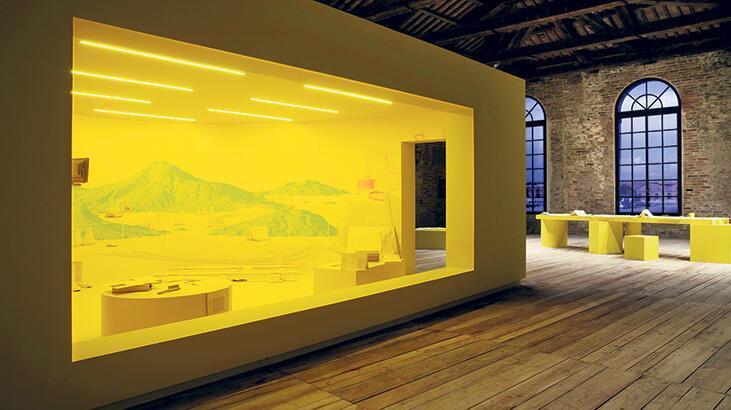
Curated by Neyran Turan and coordinated by the Istanbul Foundation for Culture and Arts (İKSV), the Pavilion of Turkey presents “Architecture as Measure” at the 17th International Architecture Exhibition - La Biennale di Venezia, titled “How Will We Live Together?” which will take place from May 22 to Nov. 21.
Taking Turan’s recently published book “Architecture as Measure” as a theoretical preamble, the exhibition positions architecture as a measure that can help assess our place on Earth and our role in relation to those with whom we live together: As architects with the actors of other disciplines and domains of work, and as a species alongside more-than-human others.
Presented through an installation, an online publication, and storytelling, “Architecture as Measure” focuses on the politics and nuances of the seemingly mundane aspects and sites of architectural construction, juxtaposing them with their planetary counterparts through geographies of resource extraction, material supply chains, maintenance and care in Turkey and beyond.
The installation designed by Nemestudio, titled “Four Dioramas,” comprises a quartet of rooms. Each diorama stages both a generic site of architecture with banal details and a specific mise-en-scène of an imaginary story taking place in Turkey.
Diorama of Quarry is a marble quarry abandoned after centuries of resource extraction in the old land. Diorama of Logistics is a large warehouse enabling a massive transit during a multi-species migration to a new land. Diorama of Maintenance and Care is a site of repair in the new land, where both the built structures and the endangered more-than-human beings are continually given maintenance and care. Diorama of Formwork is a site of reconstruction for the future inhabitants of the Earth.
Visitors can walk inside the dioramas as if they are in the interior space of an architectural model. As the dioramas collide the architectural and the planetary, the human and the more-than-human, the banal and the spectacular, and the everyday and the mythical, ideas of foreground and background are constantly flipped and negotiated.
In addition to the installation, the exhibition extends onto a website as its main publication platform. Exploring topics of focus through four different formats, which are Paperwork, Episodes, Conversations, and Essays, the website presents content written by the Pavilion’s curatorial team and the invited contributors, published periodically over the course of the biennial.
Vuslat Foundation’s first event at Venice Biennial
Vuslat Foundation, which was founded by businesswoman Vuslat Doğan Sabancı with the aim of making the skill of “listening with the ears” in the world an indispensable part of individual and social relations, is a special project partner for the 17th Architecture Exhibition of Venice Biennial.
The foundation presents the monumental installation “The Listener” by the famous Italian artist Giuseppe Penone to the art lovers between May 22 and Nov 21.
The nine-meter-high bronze sculpture in the form of a tree will be placed in the canal water in Gaggiandre, Venice’s historical place, as a special event of the biennial. The Vuslat Foundation, which aims to draw attention with this project to the importance of listening to nature, invites the audience to think and produce on this subject.
“This project emphasizes the necessity of transitioning our understanding of space from a field of vision to a listening area,” the curator Hashim Sarkis said.
“The Listener” is the new edition of Penone’s famous Idee di Pietra - Olmo (Ideas on Stone - Elm) series. The artist described The Listener, saying: “The thoughts in the human mind are like countless crystals in a stone hanging between the branches of a tree. The water veins that rise to the earth flow into the bodies of all living things, then flow into the streams and the sea. A tree rising from the waters invites that fluidity that we find a part of in ourselves.”